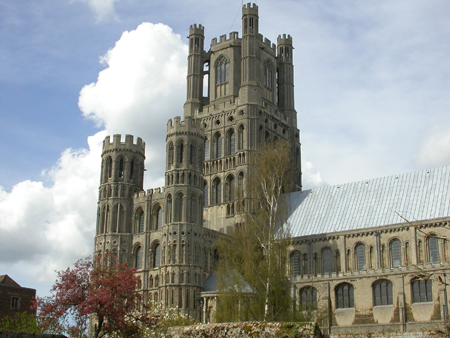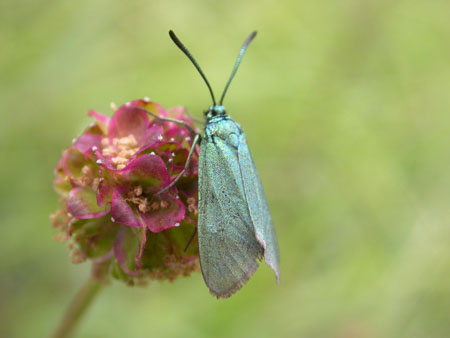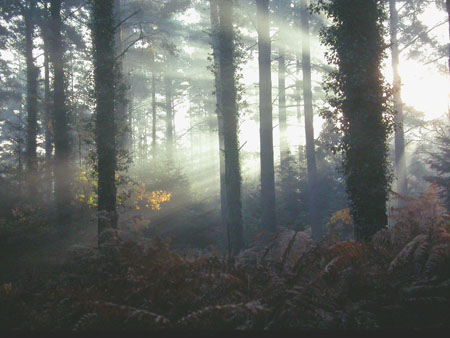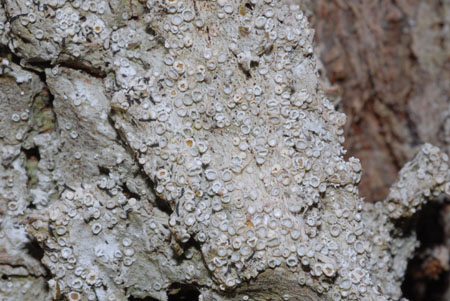




A Natural History Biography
Simon Davey was born in Kent. At an early age, the family moved to rural Norfolk as his father was a school master. The school was set in an extensive country estate, the nearest shop being at least two miles away. The estate was rich in wildlife, and Simon’s life was dominated by a fascination in plants, birds, butterflies and moths. At the age of eight, he won a choristership to Ely Cathedral Choir and became a boarder at the King’s School, Ely. Ely is a small city surrounded by wildlife habitats. Pits associated with the local sugar beat factory attracted a rich variety of birds. Before going to Ely, he had had a deep interest in flowering plants, however this was not as “politically correct” as it might have been in a small eight year old. It was to be several years before he took up botany again. However, Ely is in the middle of the fens, and a bicycle allowed him to visit Wicken, Chippenham and Woodwalton Fens.
His education at Ely prepared him for three years at Cambridge University where he was at Selwyn College. One of the greatest disappointments of his life was the lack of interest taken at that time in Ecology and a holistic approach to the environment.
After taking his first degree in Natural Sciences, he went to Sussex University to study for a Certificate of Education and subsequently became a schoolmaster at a boarding school in Oxfordshire. Here, his greatest achievement was to inaugurate a Natural History Society. It soon became apparent that teaching did not satisfy his professional desires and he found himself working as a volunteer on the insect collections at Leicester Museum. This was a valuable grounding. Soon he was asked to apply for a studentship at the Museum, and after receiving invaluable experience in museology, successfully applied for the post of Keeper of Zoology in the Hampshire County Museum Service. Hampshire had a very strong appeal as it contained the New Forest, arguably the most exciting area for natural history in the United Kingdom.
Unfortunately his grand vision for Biology in Hampshire was not matched by any great enthusiasm from his superiors. However, Hampshire did have a strong tradition in Natural History. He soon found himself secretary of the New Forest Scientific Committee, a group of naturalists organised to advise the then Nature Conservancy and chaired by the late Dr Francis Rose. In 1971, Dr Rose took him to the New Forest to introduce him to lichens. During that amazing day, he was shown 105 species and made a collection of them for study. His first lichen, found on a moribund beech near Lyndhurst was Lobaria pulmonaria. Those naturalists with even a limited knowledge of lichens will appreciate the significance of that! The day’s foray also included Parmotrema arnoldii and Caloplaca herbidella. He had the great good fortune to join Dr Rose on study tours in Devon and Cornwall as well as Wales and Hampshire. For one important expedition, he joined Dr Rose and the late Ted Wallace to North-western Scotland. In 1974, he was invited by Dr Rose to organise the site visits for a field course for King's College, London students studying biogeography in southwestern France based in Perpignan. Soon he was meeting other great lichenologists, and became a member of the British Lichen Society.
After sixteen years at the Hampshire County Museum Service and finding his life more and more concerned with administration, and less and less with Natural History, he took that major step into a seeming void, and became an independent consultant. At first, he tried to enter the commercial world as a broad based ecologist, but soon found himself specialising more and more in lichens. His independent life style gave him the opportunity to become a natural history tour leader and lecturer on cruise ships. He now treats birds and moths more or less as a hobby and it is primarily lichens and bryophytes as well as higher plants that fill his professional life.
Significant projects have included ten years of studying the lichens of the island of Jersey, in preparation for the book The Lichens of Jersey. This has also involved study into nineteenth-century lichenology as Charles du Bois Larbalestier, a major figure of the time, was a Jerseyman and the father of Jersey lichenology. Simon Davey has undertaken regional lichen studies in the Irish Republic, Western Scotland and Wales, especially Merionethshire. For a time he was the Field Secretary of the British Lichen Society and served on the Society's Council. He has also been a regular serving committee member for the Institute of Ecology and Environmental Management.
For many years he was able to lead and organise broad-based natural history holidays, especially to Mallorca, Corfu and Corsica. More recently, and accompanied by his wife, he has lectured on cruises for Saga Cruising on Saga Rose, Saga Ruby, Spirit of Adventure and Saga Pearl and before that the MV Explorer. This has allowed him to explore much of the world, although he has concentrated latterly on South America, the Arctic and the Middle East.
In 2013 the book Scilly Birding: Joining the Madding Crowd was published by Brambleby Books. This has been followed up by the publication in July 2016 of his second book for Brambleby Books, Is No Problem, which is a no holds barred account of the enjoyable and horrible of natural history tour leading in exotic locations that include the Galapagos Islands, Soviet Central Asia and Costa Rica.